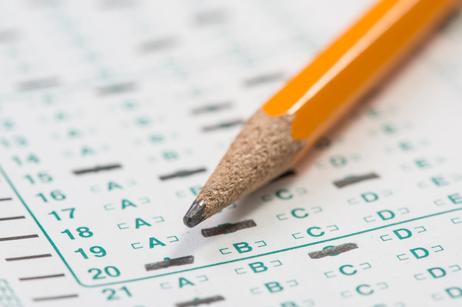Standardized testing is part of most private schools' admissions requirements. There are several reasons why schools use standardized admissions tests. The first reason is that they level the admissions playing field. Every candidate for admission must take the same admissions test. Fairness is the name of the game. The second reason is that schools want to be able to assess candidates' proficiency in core academic subjects. In other words, can the candidate who wants to come to my school do the work we do at our school?
The two most commonly used independent school tests are the SSAT or Secondary School Admission Test and the ISEE or Independent School Entrance Examination.
About the SSAT
From the SSAT handbook, page 12: "The SSAT is the required admission test at many of the best independent schools in the world. This test is one important step on the path to an independent school education. Your SSAT score is one part of your complete application to an independent school, and while it is important, it is not the only criteria for admission. The SSAT is designed for students in grades 3 through PG and is administered on three levels (Elementary, Middle, and Upper)."
The SSAT is probably unlike any test your student has ever taken. That’s because it’s designed to find the best students in a large pool of excellent students. The SSAT’s questions are significantly different—in their difficulty and their content—from questions on other standardized tests to the point that your student isn’t even expected to know everything that’s on the test! This means that, in order for your student to have the best chance at getting a score that’ll help them get admitted to their school of choice, they’ll need to prepare for the test.
What is being tested?
What are schools looking for? Basically, schools want to assess language and mathematics skills. Reading comprehension, vocabulary, reasoning, mathematical concepts and problems, and more are the substance of most standardized tests.
Noodle Pros tutor, Brendan Mernin, offers the following advice for taking the quantitative section of the SSAT:
"Write out your math as thoroughly and as clearly as you can. Even when you can do much of the calculation in your head, it helps a lot to have your step-by-step thinking on paper in front of you. Many times when you get lost or stuck, you can look at what you have written and find your way out of a jam. You can also find and fix the errors in your thinking or your calculation more quickly and more accurately when you can see the work in front of you. Don't do all your math in your head! "
This video offers practice with the quantitative section of the SSAT.
When can you take the test?
SSAT and ISEE are offered several times a year in many locations nationwide. For registration deadlines, fees and other details consult their sites. You can register in a variety of ways including online, by telephone, via mail, and by fax. If you need assistance paying the examination fees, there are fee waiver programs available.
Can you practice for the test?
All the common admissions tests have spawned a wide range of test preparation solutions. SSAT and ISEE have excellent, in-depth guides on their sites that give sample questions and much more. But the plain truth is that there is no point cramming for a standardized test. Become familiar with the testing format and the type of questions asked. Apart from that, do the best you can!
About the ISEE
The ERB website describes the ISEE as follows: "Accepted by over 1,200 independent schools around the world, the Independent School Entrance Exam (ISEE) is the most trusted admissions assessment tool available for students in Grades 2-12. And with the most testing options of any private school entrance exam, including online, paper-based, and at-home administrations, ISEE is also the most flexible assessment option for select families."
This video offers strategies for the Upper Level ISEE.
Testing is one part of the admissions process
Many parents and students focus too much on standardized test scores. While test scores are important, they are only one of many benchmarks which an admissions committee will review. That's why a complete admissions profile is so important. Be sure to give the admissions staff the whole picture. Standardized admissions tests are part of the drill in most private school admissions offices. You may well be wondering why your child's academic transcripts and teacher recommendations from her current school are not sufficient. Why is it necessary to prepare and register for a standardized admissions test? The results of a standardized admissions test indicate to the school what your child knows and doesn't know academically. Essentially, it would serve no purpose to accept your child only to have her flounder academically. You would be unhappy. Your child would be miserable. The school also would be in the difficult position of not being able to deliver the kind of academic results it is capable of achieving. To avoid this losing situation, most private schools will insist on all applicants taking a standardized admissions test.
Questions? Contact us on Facebook. @privateschoolreview















